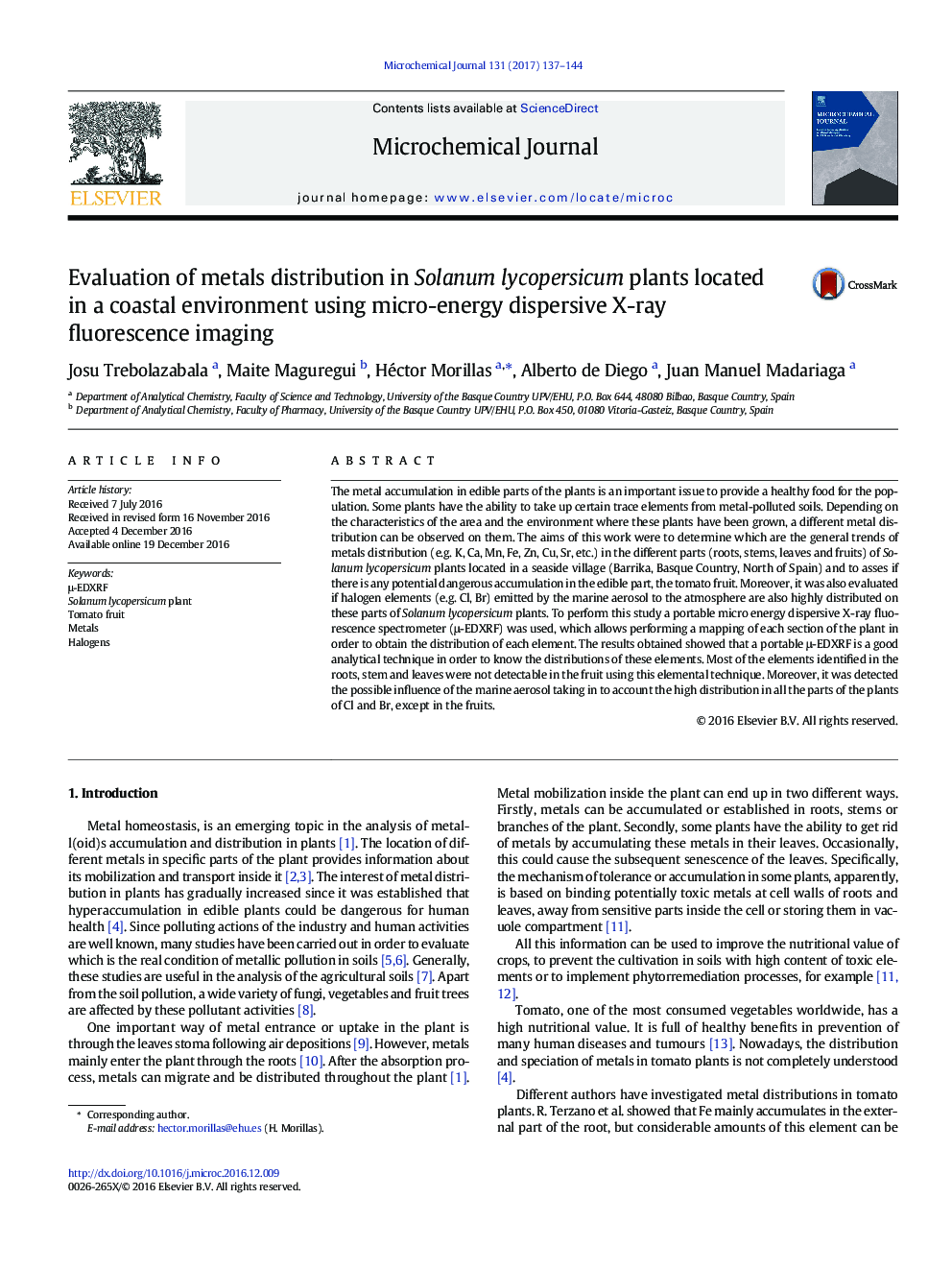| Article ID | Journal | Published Year | Pages | File Type |
|---|---|---|---|---|
| 5139266 | Microchemical Journal | 2017 | 8 Pages |
Abstract
The metal accumulation in edible parts of the plants is an important issue to provide a healthy food for the population. Some plants have the ability to take up certain trace elements from metal-polluted soils. Depending on the characteristics of the area and the environment where these plants have been grown, a different metal distribution can be observed on them. The aims of this work were to determine which are the general trends of metals distribution (e.g. K, Ca, Mn, Fe, Zn, Cu, Sr, etc.) in the different parts (roots, stems, leaves and fruits) of Solanum lycopersicum plants located in a seaside village (Barrika, Basque Country, North of Spain) and to asses if there is any potential dangerous accumulation in the edible part, the tomato fruit. Moreover, it was also evaluated if halogen elements (e.g. Cl, Br) emitted by the marine aerosol to the atmosphere are also highly distributed on these parts of Solanum lycopersicum plants. To perform this study a portable micro energy dispersive X-ray fluorescence spectrometer (μ-EDXRF) was used, which allows performing a mapping of each section of the plant in order to obtain the distribution of each element. The results obtained showed that a portable μ-EDXRF is a good analytical technique in order to know the distributions of these elements. Most of the elements identified in the roots, stem and leaves were not detectable in the fruit using this elemental technique. Moreover, it was detected the possible influence of the marine aerosol taking in to account the high distribution in all the parts of the plants of Cl and Br, except in the fruits.
Keywords
Related Topics
Physical Sciences and Engineering
Chemistry
Analytical Chemistry
Authors
Josu Trebolazabala, Maite Maguregui, Héctor Morillas, Alberto de Diego, Juan Manuel Madariaga,
